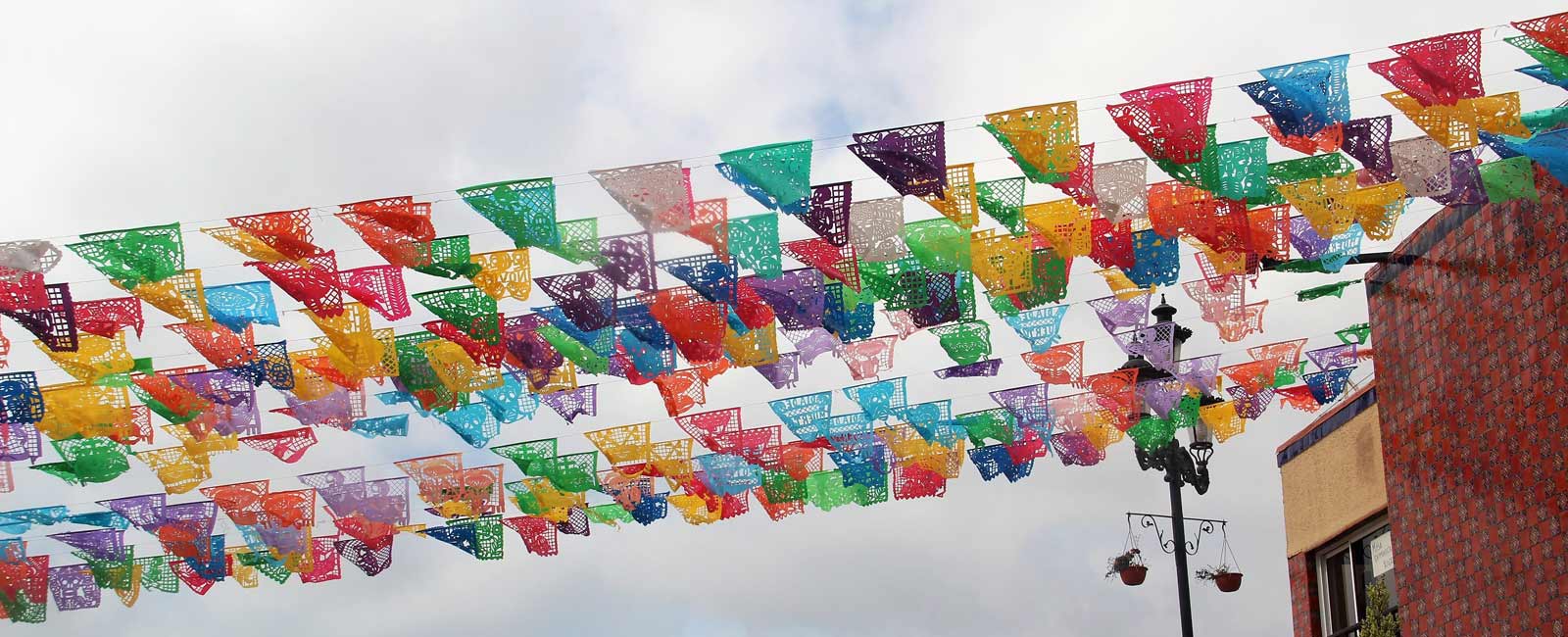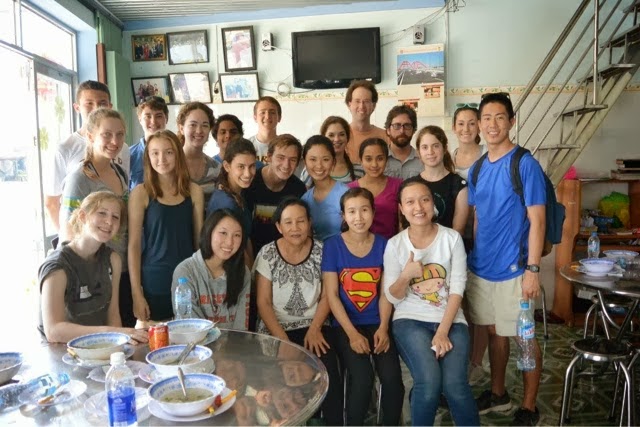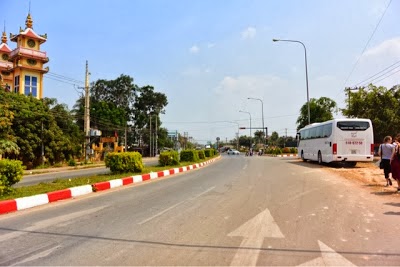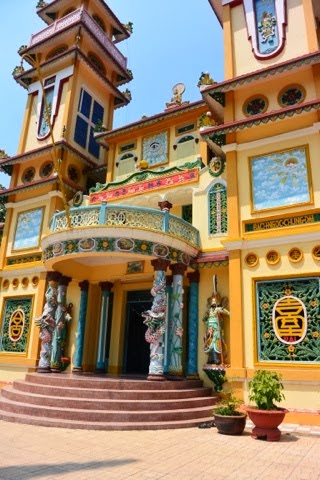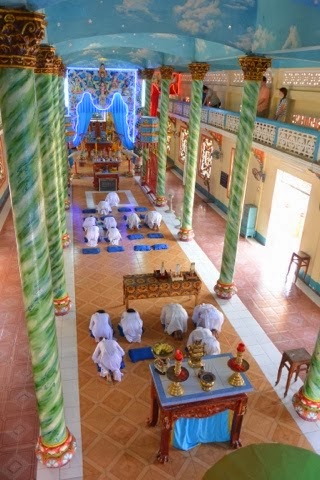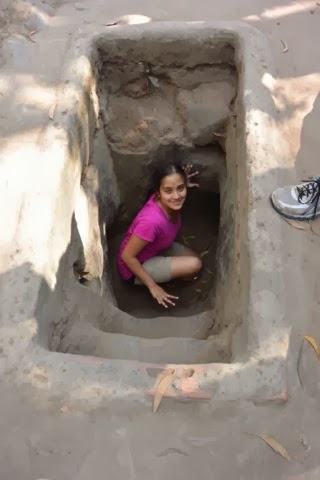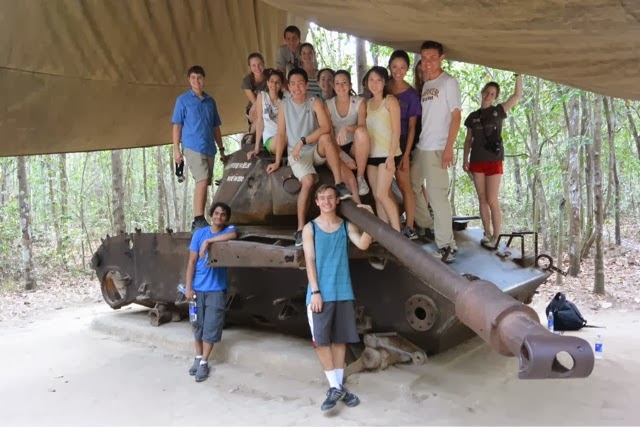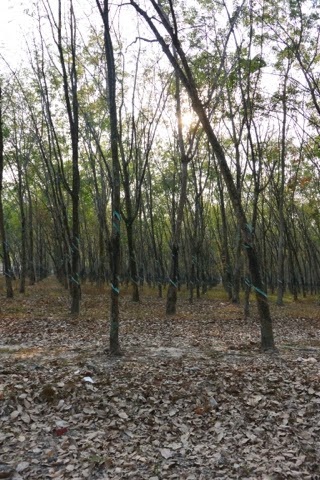Friday, February 21, 2014
Francis Parker - Vietnam 2014
Day 11: Saigon and Environs
Reconciliation is a complicated yet necessary part of humanity. Being able to let go of the past and stay focused on the future makes living in the present easier and more enjoyable. It is often a challenge for people to move on, especially when it comes to war. Today we had the privilege of witnessing the hardships of the war through the eyes of Kim Phuc’s family and how one of the most iconic pictures of the Vietnam War affected the family’s image in society.
After a long rest and a filling breakfast we got on our bus and began the drive to visit Kim Phuc’s family. During the two-hour drive, Mr. Hau gave us a detailed explanation of the history of Vietnam and how different religious influences have affected the nation. When we arrived at the Phuc family’s house, we were greeted by Kim’s sister in-law. We sat down at the family-owned restaurant below the house and watched a detailed documentary about Kim and the bombing of her village. The documentary contained actual footage of the Napalm bombs being dropped on the village and showed the reaction of the journalists as Kim ran from the inferno. After explaining Kim’s recovery from her third-degree burns, the documentary focused on Kim’s forgiveness and her ability to move on. The most inspirational part of the documentary was when Kim visited the Vietnam War Memorial and met with an officer who had been involved in the bombing of her village 25 years earlier.
Kim’s forgiveness of the event was a very important of how Kim’s sister-in-law described her story as well. We asked her what information we should take back to the United States, and she kindly requested that we express how peaceful and trustworthy the Vietnamese people really are, which is interesting considering that most Americans do not view the Vietnamese that way. We then walked to Kim’s old temple and observed a Cao Dai service which incorporated concepts of Christianity, Buddhism, Confucianism, and Daoism. Mr. Hau explained that followers pray for 30 minutes every 6 hours, starting at midnight. After lunch at the Phuc’s restaurant and an ice cream treat from Mr. Hau, we drove to the Cu Chi tunnels where we got a completely different perspective on the war.
The complex consisted of much more than just the tunnels. We entered a small bunker where we watched a documentary on the history of the Cu Chi area and its resistance to American forces. The film commemorated Vietnamese soldiers for their efforts and viewed Americans as heathen. Propaganda like this was one of the many effective tactics used by the party to influence the people’s view of their enemy and how they believed their enemy viewed them. This is similar to the War Remnants Museum we visited yesterday and to the factors Kim Phuc’s sister-in-law brought up about why Americans do not like Vietnam. We then got to experience the life of a resistance fighter in the jungle by dropping into small tunnel entrances, observing the significance of each bunker (kitchens, workshops, etc.), learning how booby traps work, shooting guns, and of course maneuvering through a full-length tunnel. The thrill of going through a Viet Cong tunnel is like nothing we had ever experienced before. It wasn’t until we left the tunnel that many of us realized how fast our hearts were pounding, how much we were gasping, and how hot it was in the tunnel. The highlight of the experience was without a doubt Mr. Holbrook’s attempt to get inside a tunnel entrance designed to keep average-sized Americans from entering, let alone a big friendly giant.
After spending eleven days in Vietnam while being exposed to both Northern and Southern influences, it is very obvious that the Vietnam War that ended almost 39 years ago is still a central component of this nation. It is still not safe to say which side was just in their motives for fighting in the war; however, if one thing is for certain, it is what Kim Phuc said: “nobody wants war.” George Washington strictly believed that Americans should never fight unless there was an absolute certainty of victory. What was the victory Americans were fighting for in Vietnam? Our visit to Vietnam informed us of the North’s motive to fight and made us question whether Americans knew what their motive was. All of Vietnam (North and South) has managed to move on from the war, yet Americans still fail at one thing that prevents them from moving on. Recognizing defeat is a challenge that America as a nation will continue to struggle with for who knows how long. The day that we learn to accept defeat is the day that America can proudly move on from the past and set our eyes for the future.
–Nick
Day 11: Photo and Video Highlights
After watching a documentary about Kim Phuc’s reconciliation with the war, Kim’s sister-in-law explained to us the aftermath of the bombing and how it has affected the family. Although Kim left the country many years ago, the Vietnamese government still closely watches them. The government also continues to be a burden to the family especially by making them move their house when the government decided to expand the road in front of their house. But even with so many difficulties that have inflicted them, Kim and her family seem to be happy and looking forward to the programs that Kim is starting up.
The street where Kim Phuc ran down after the Napalm bombing of her village.
The Cao Dai temple where Kim’s family used to worship. This was also the temple that Kim and her family hid in during the bombing of her village. Cao Dai has about 3 million followers; the religion combines ideas from Buddhism, Daoism, Christianity, and Confucianism. These people gather at the temple four times a day for thirty minutes praying and singing songs worshiping the different faces of God.
The Cu Chi tunnels are an amazing network of tunnels and bunkers spreading over 70km that the Viet Cong used to fight first the French and then the US military. Before we toured the different bunkers and even climbed through one of the tunnels, we watched a documentary praising the Vietnamese soldiers for their efforts against the Americans. Many of us were stunned by how blunt the documentary portrayed the Americans as hellish. But even after that entertaining and eye-opening documentary, we still enjoyed firing guns, climbing a tank corpse, and especially crawling thought the dark and damp tunnels.
Rubber trees were planted extensively by the French. They are only harvested during the rainy seasons. The tree is tightly bounded in latex and then a slit is made. Through this small gap, a rubbery liquid substance is then collected in bowls. This liquid is then sent to factories to be processed and turned into the rubber we recognize.
During an interview with Kim Phuc’s sister in law, she explained to us the hardships that their family has had to face, especially after Kim’s defection to Canada. Phuc’s family is endlessly pestered for money by the local government because of her choice to leave her home.
This clip captures a prayer session of the worshipers of the Cao Dai religion.
–Esther and Mark
Education Travel,education travel programs,educational field trips,Educational travel programs,Francis Parker Vietnam 2014,Global Community,Global Education,Peace Works Travel
